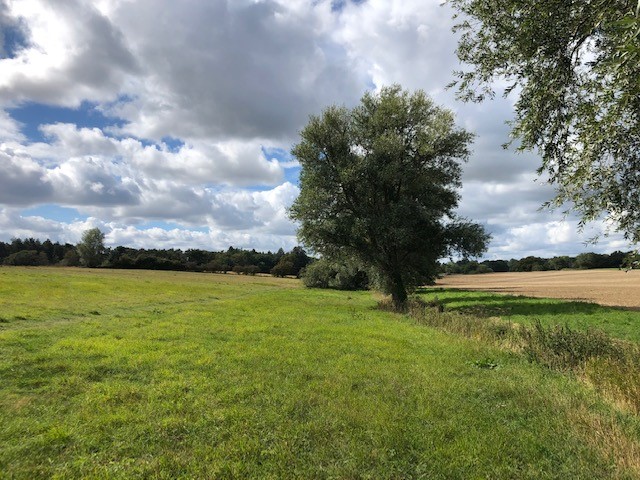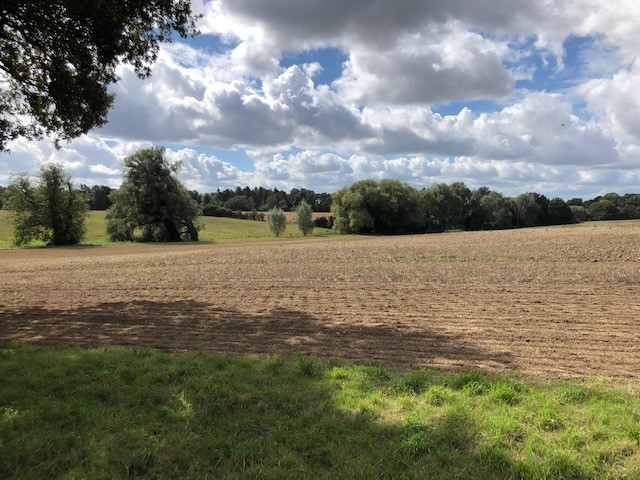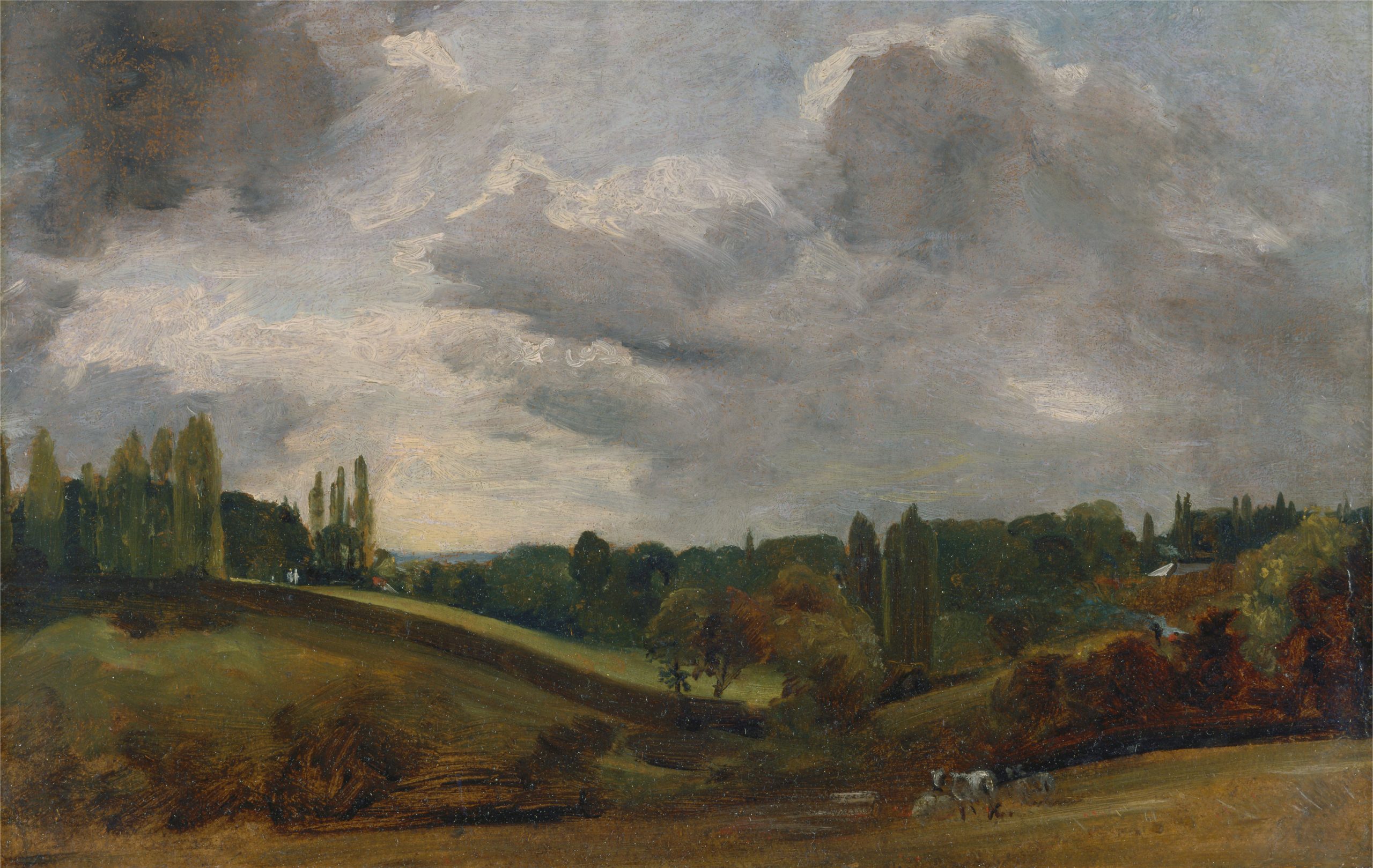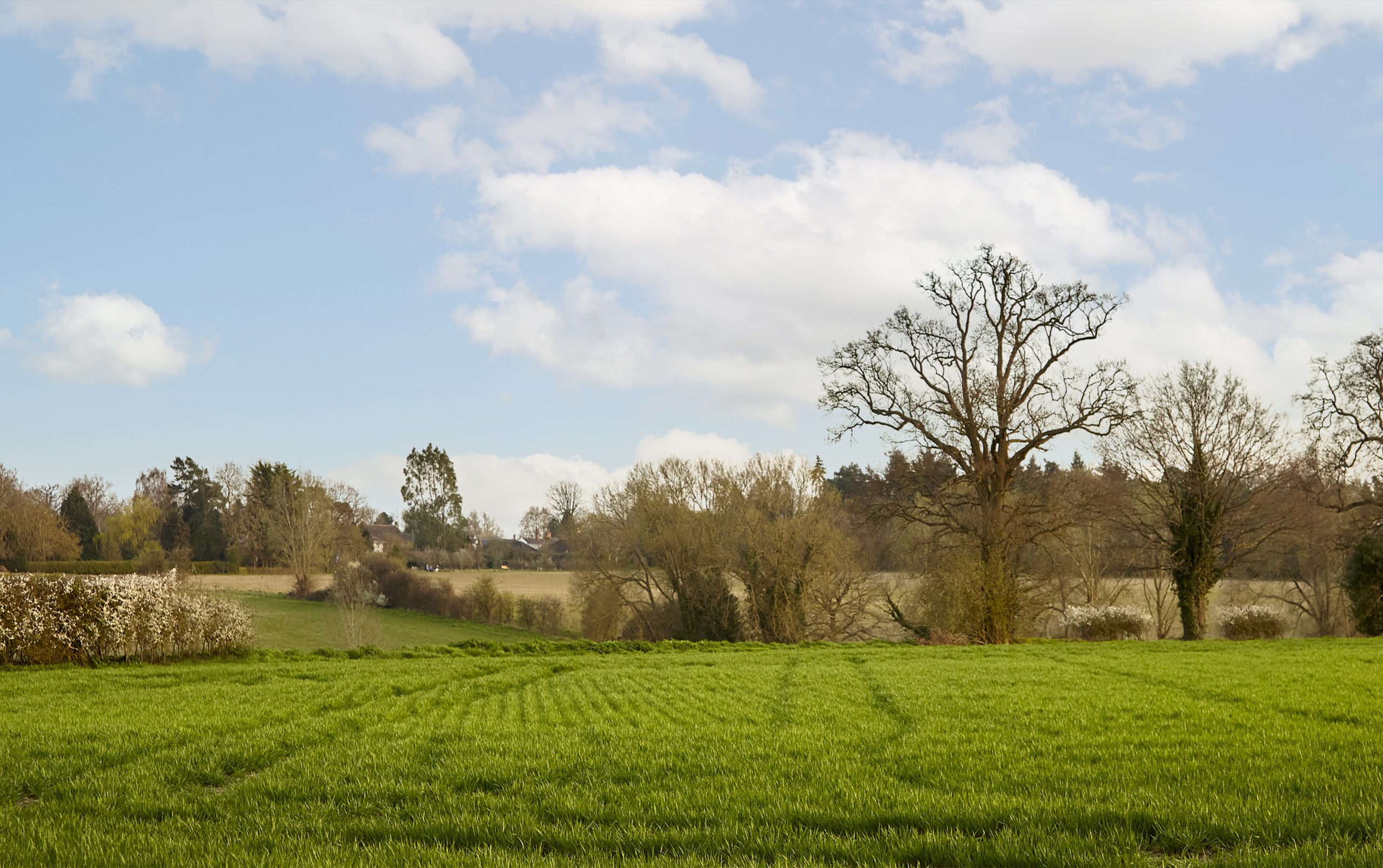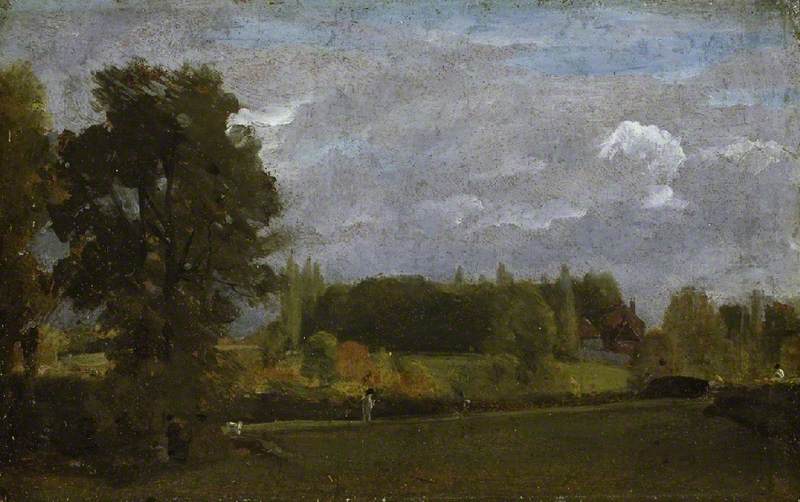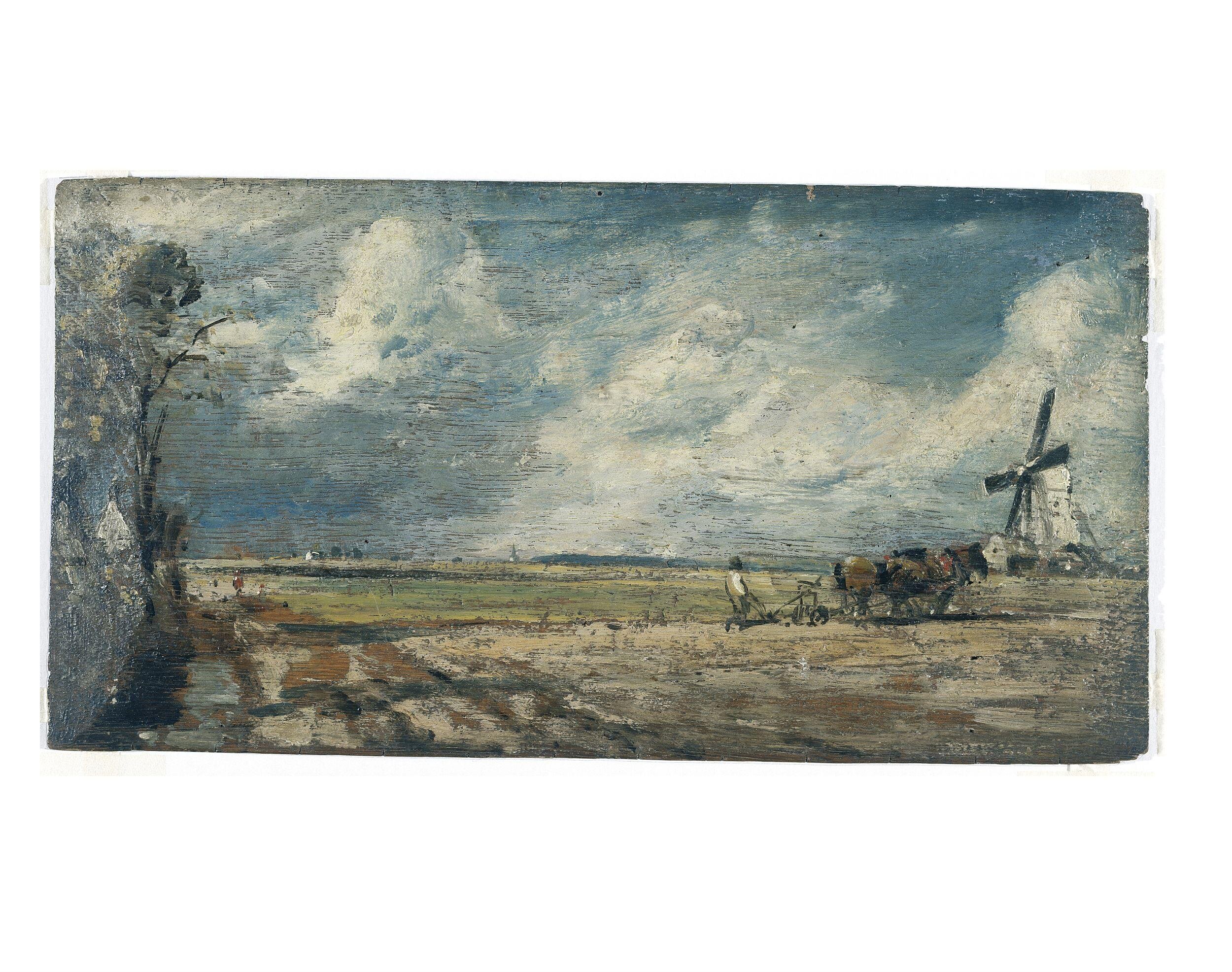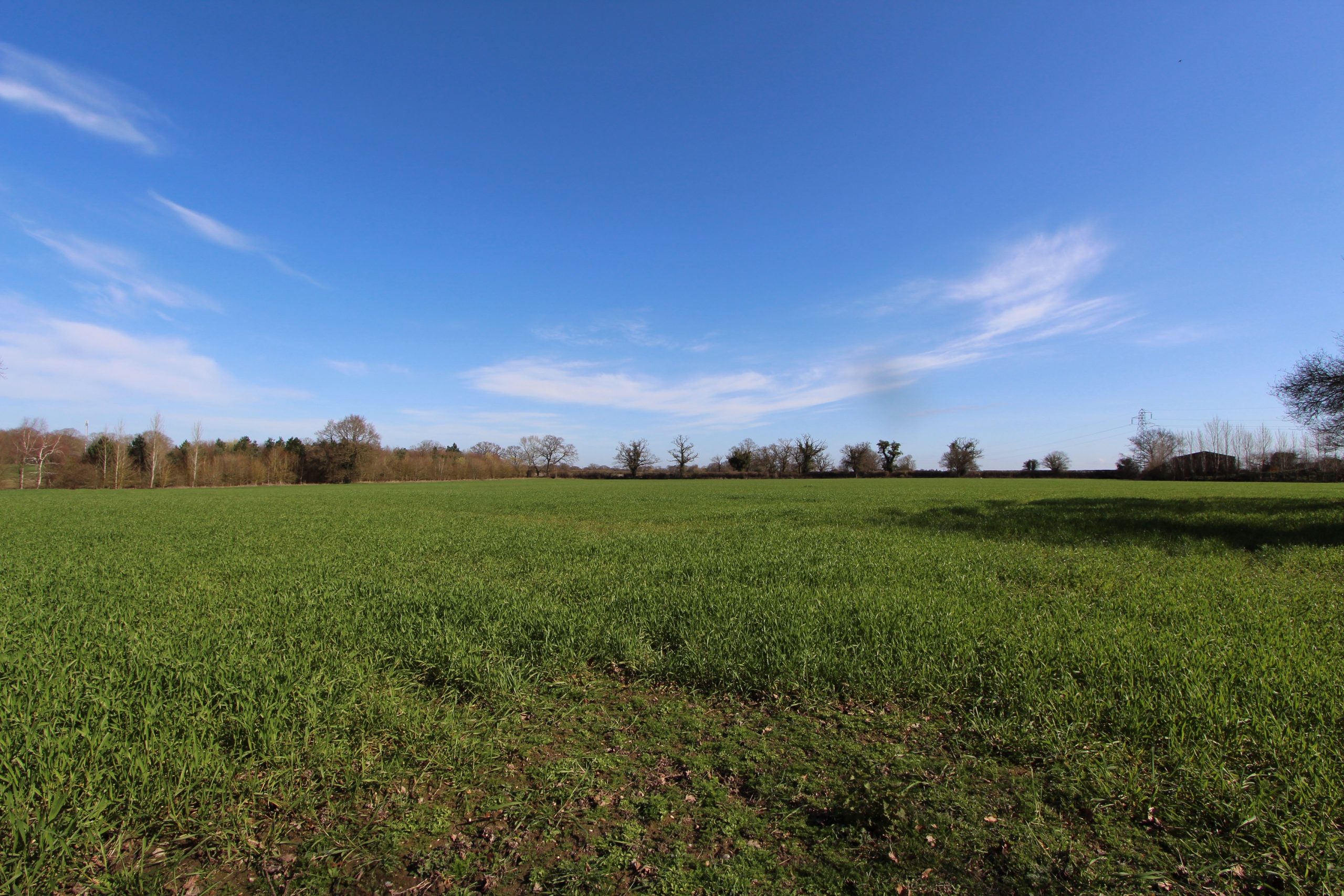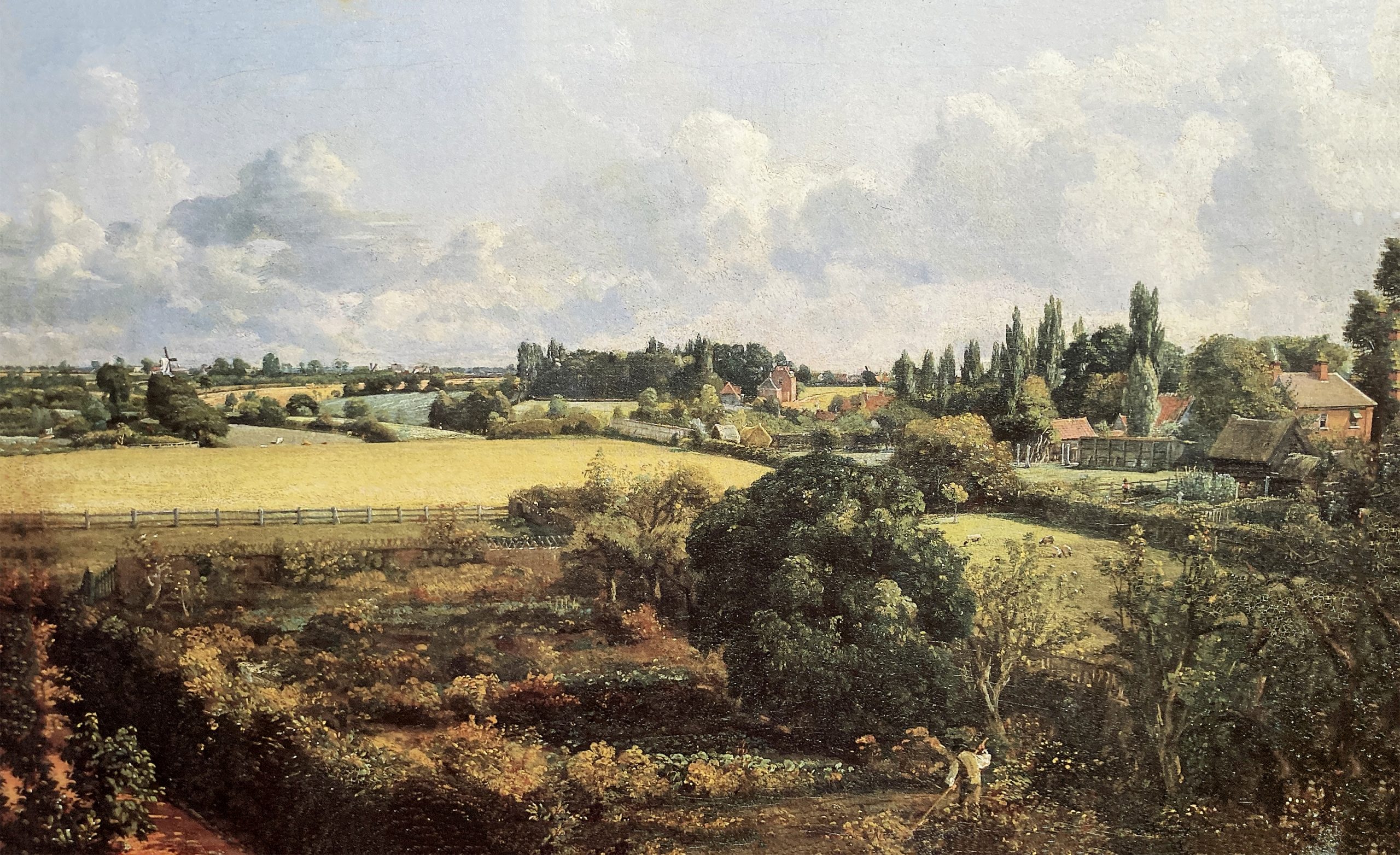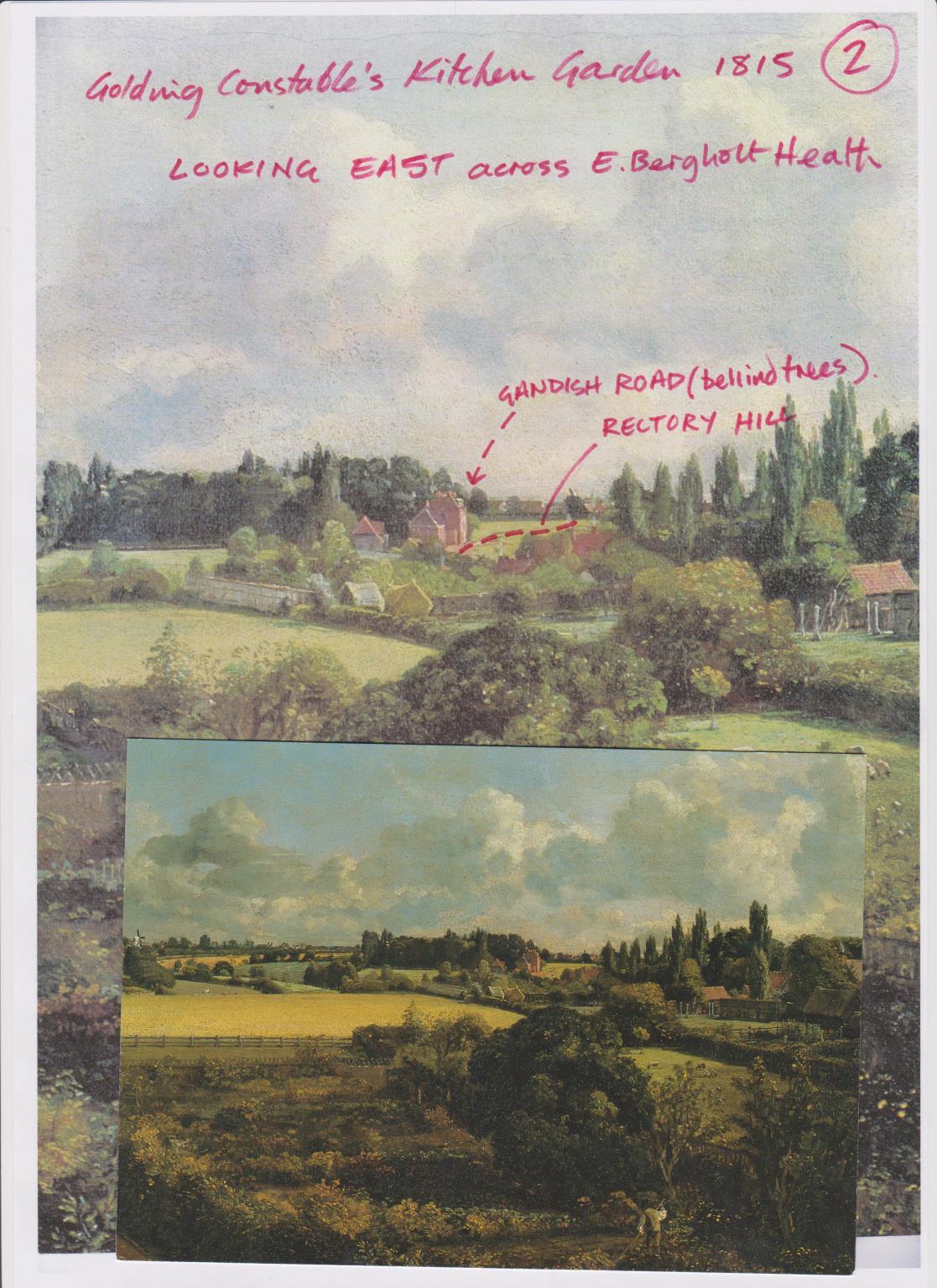Donkey Track and Heath
The Donkey Track is a long-established footpath which runs northwards from Gandish Road across what was originally the village “heath” or “common”.
To the south-west of the track, the undulating land is divided by the Riber stream which continues across Rectory Hill and eventually down to the Stour.
The western boundary is created by the rear of The Old Rectory and properties which face Rectory Hill, The Street, and Gaston Street.
The north-eastern side of the track is distinguished by a 20-year-old woodland at the southern end leading to cultivated fields divided by hedges leading up to Heath Road/Mill Road, the main vehicular route around East Bergholt. The rear of the 1970’s Richardson Road estate and the Medical Surgery complex abut the land to the north.
- 3
- From the "Donkey Track" footpath, to the Heath eastwards and to the Riber Valley southwards.
Details
Historical Importance:
The land was part of East Bergholt Heath before “enclosure” happened in the late 18th and early 19th centuries. The Donkey Track was well established as a path across the Heath and the land between it and the rear of The Rectory is shown on old maps (like the Brasier map of 1731) as The Great Field.
The land to the north-east of the track formerly was criss-crossed with old routes towards East End , Gastons End, Puttocks End and Manningtree. This land was also distinguished by a windmill owned by John Constable’s father.
Assessment of Special Interest:
John Constable was clearly fascinated by this area of land in the village of his birth and painted and drew it on many occasions. The views from “Golding Constable’s Kitchen Garden” (1814) show the Rectory, the fields and windmill in the distance, and he painted the Riber Valley from the Donkey Track on several occasions , focussing on the rear of the rectory’s walled garden and trees across the landscape. The endearing thought of his true-love, Maria Bicknell , residing in the Rectory at the time may well have been an incentive. These paintings in local, national and international collections , illustrate that much of the landscape, hedgerows and tree cover has changed very little in the 200 years since Constable painted these iconic views.
Constable also looked north-east of the Donkey Track and painted the Heath and his father’s windmill (which at one point in his early life he was put in charge of). His 1814 entitled “Spring: East Bergholt Common” features the windmill and a ploughman following his horse. It was later made into an engraving which became a national best-seller in Victorian times.
It is also highly likely that John Constable walked this land in his long and difficult courtship of Maria Bicknell (see Martin Gayford’s “Constable in Love”).
Aspects of Sensitivity:
- The cultural importance of the landscape views are on an international scale because of Constable’s fame as an artist.
- It is remarkable that these views he recorded two centuries ago still exist, and they should be protected.
- The Landscape Sensitivity Appraisal of 2020 by Heritage Collective awarded this area High Sensitivity.
- High Sensitivity means that “It is unlikely that any development, save for individual plots in very specific locations, would be appropriate.”
- The Donkey Track itself is a very popular amenity and walking route for the residents of East Bergholt.
Relevant Reading, Documentation, Maps and Photographs :
- “Historic Landscape Study of East Bergholt and the Cultural Legacy of John Constable” by Heritage Collective (2020)
- “Constable in Love” by Martin Gayford
- Brasier maps
- “The Making of a Master. John Constable” Mark Evans V&A (2014)
- “Constable’s England” Graham Reynolds, Metropolitan Museum of Art (1983)
- “Constable: Paintings, Watercolours and Drawings” Parris, Fleming-Williams, Shields. Tate Gallery (1976)
- 3
- From the "Donkey Track" footpath, to the Heath eastwards and to the Riber Valley southwards.

